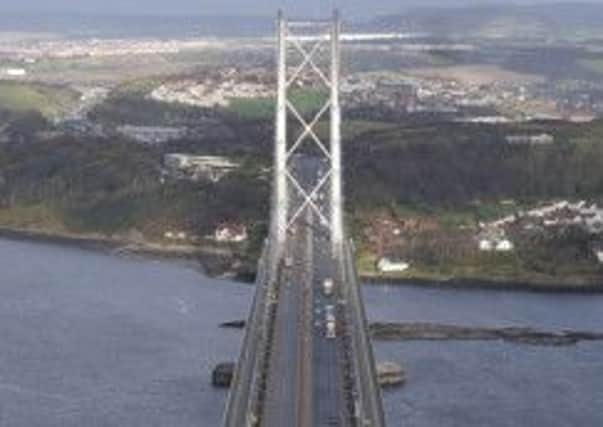Call to rebuild Forth Road Bridge for more traffic


Bridgemaster Barry Colford said he would like the crossing to have a new type of deck to carry vehicles to cut increasingly expensive and difficult repairs.
Symptoms of wear on the 50-year-old structure which could be fixed with a replacement deck include the “bump, bump, bump” sensation felt by motorists driving over worn-out joints.
Advertisement
Hide AdAdvertisement
Hide AdColford said the best long-term solution was to install a “box girder” deck – a rectangular tube which has enclosed access to the underside of the deck.
In a presentation to the Institution of Civil Engineers Scotland (Ice) last week, Colford said the massive scheme was top of his wish list.
It could mean closure for three years. However, it could also enable the crossing to carry more traffic than just buses and taxis after the adjacent Queensferry Crossing opens in two years’ time.
While the Forth Road Bridge is planned as a public-transport-only crossing, there could be political pressure to open it to other vehicles in the future – to assist economic growth, for example.
The new bridge will have a box girder deck, with a miniature railway inside to transport engineers.
By contrast, the Forth Road Bridge is one of the world’s last suspension bridges to have an “open truss” deck – an exposed metal framework supporting the carriageways.
This makes repairs and maintenance difficult because there are limited walkways underneath, and platforms have to be rigged up for such work.
The repairs headache has steadily intensified because the bridge now carries twice as much traffic as it was designed for, including far heavier lorries.
Advertisement
Hide AdAdvertisement
Hide AdPainting the truss is understood to cost £300 per square metre, or some £60 million in all, with the paint accounting for just 3 per cent of the total.
A spokesman for Colford at the Forth Estuary Transport Authority (Feta), which runs the bridge, said: “This is a long-standing issue and an ongoing problem, with constant running repairs required.
“It is one area of the bridge which could have been better designed.
“The truss deck has open steelwork underneath, while a box girder, which is enclosed, is much easier to maintain.”
Derek Elder, a former director of Ice Scotland, said looking after the bridge’s deck was becoming increasingly difficult.
He said: “The ongoing certainty is the high cost of maintenance, but there are also safety concerns over accessing the underside of the deck.
“Each access platform has to be custom designed and there is always an issue of safety.”
Neil Greig, policy and research director of the Institute of Advanced Motorists, said: “I think drivers will be a little surprised, and perhaps a little disappointed, to hear in 2014 that there may have been a ‘better’ way to build and maintain the Forth Road Bridge over the years.
Advertisement
Hide AdAdvertisement
Hide Ad“If full replacement of the deck can be shown to be cheaper in the long run then I see no reason why it should not be considered to keep the Forth Road Bridge fit and healthy for another 50 years.”
A spokesman for the Scottish Government’s Transport Scotland agency, which will run both bridges from 2016, said: “We work with and value the professional recommendations of Feta on future requirements to maintain the Forth Road Bridge.
“These will be considered alongside other transport priorities in future budgets.
“As is the case with the full range of future funding priorities, at this stage it is not possible to provide a commitment on the precise details of future funding for the Forth Road Bridge, but we will give full consideration to expert views on what may be required.”